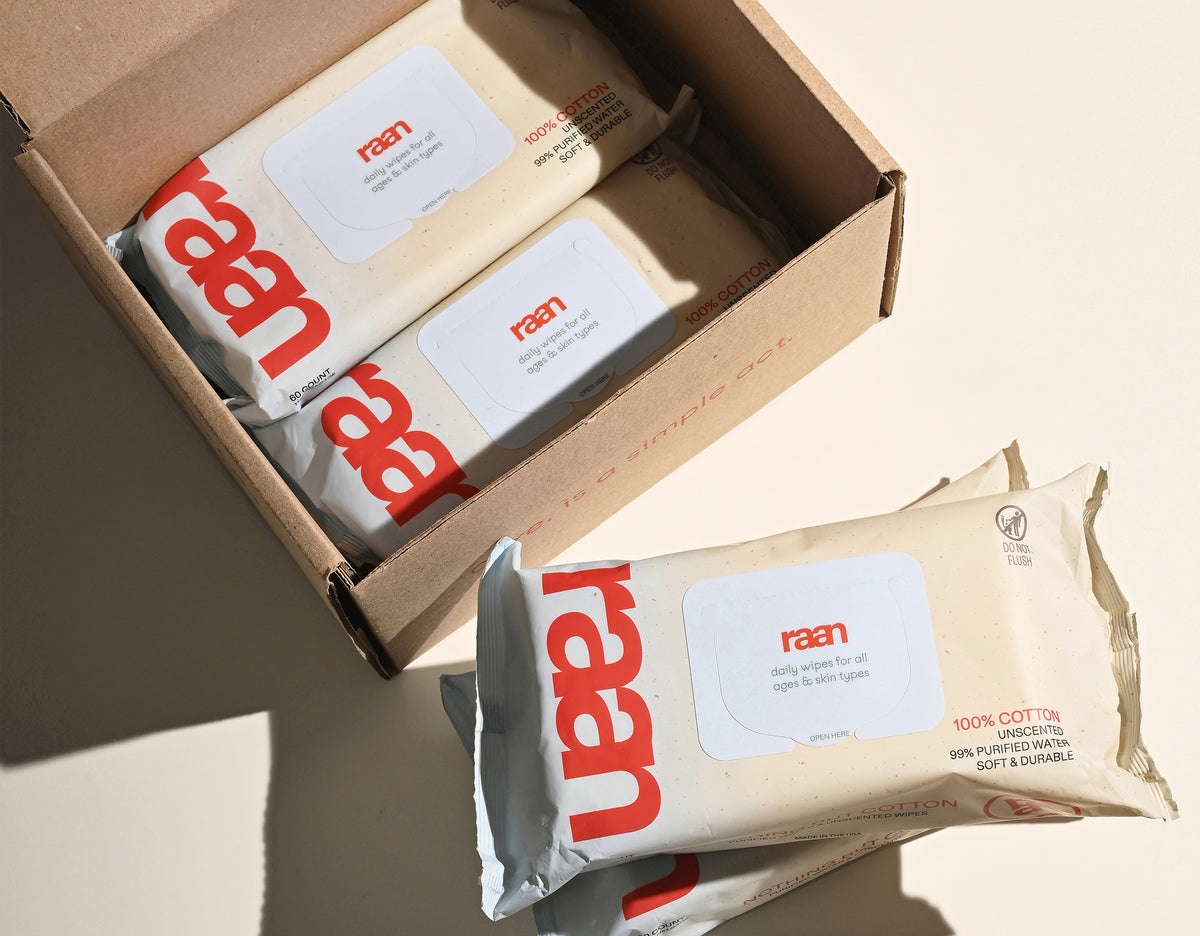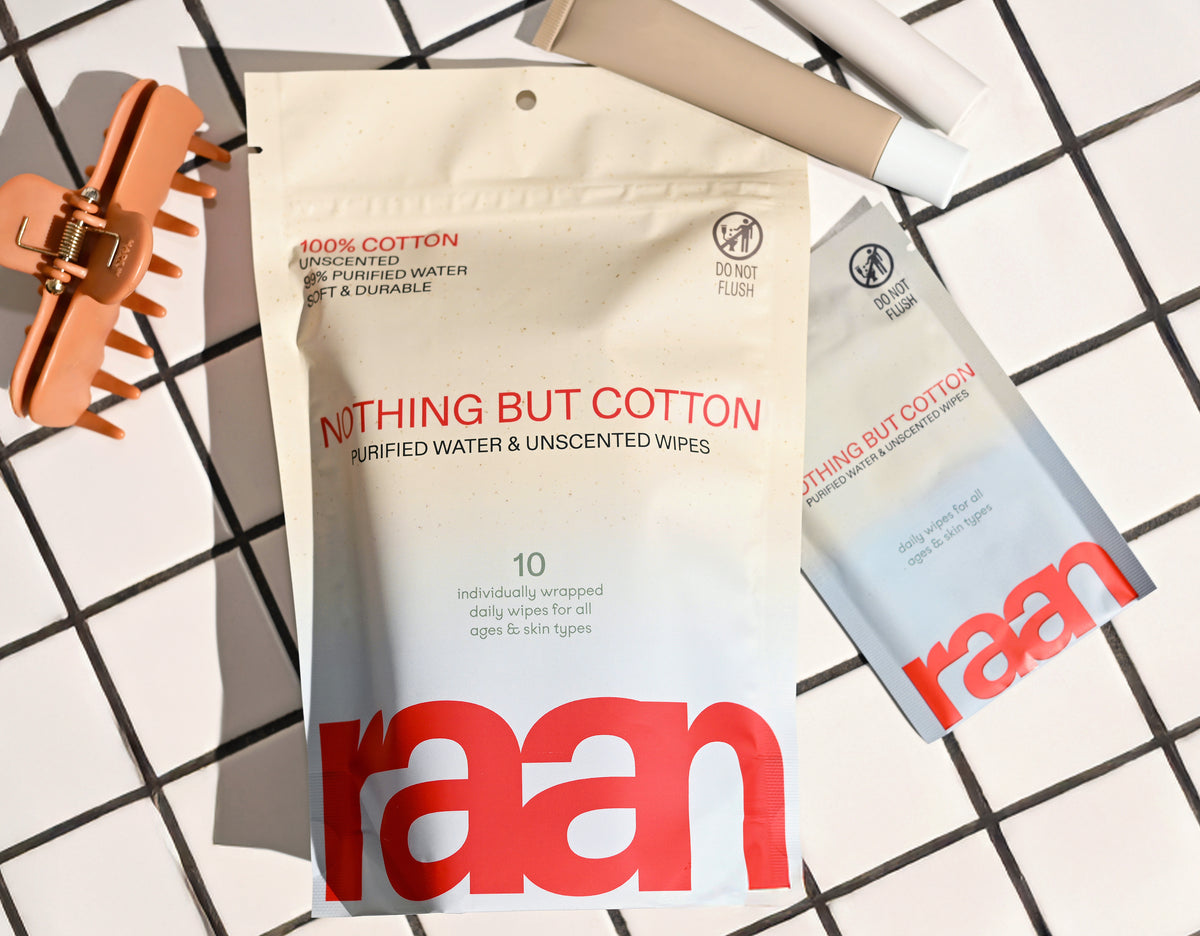Key Takeaways
- The absolute essentials for a newborn's first week include frequent diaper changes, feeding supplies, safe sleep gear, basic clothing, a health kit, and a properly installed car seat.
- Plan for at least three loads of laundry weekly and use multiple fitted sheets with mattress protectors to simplify nighttime changes.
- Buy additional items like swaddles, tummy-time mats, teethers, and feeding tools based on your baby's developmental milestones rather than age alone.
- Safe sleep requires a firm, flat mattress with a tight-fitted sheet, an empty crib, and careful swaddling that allows hip movement and stops when rolling begins.
- Setting up a well-organized diapering station with skin-safe products is crucial to managing the frequent diaper changes efficiently and comfortably.
Table of Contents
- Start Here: The Absolute Essentials for Week One at Home
- The Minimalist First-Year Roadmap: What to Add at 0–3, 3–6, and 6–12 Months
- Safe Sleep, Simplified: Crib, Mattress, Swaddles, and What to Skip
- Diapering Without Drama: Supplies, Setup, and Skin-Safe Routines
- Feeding Pathways: Breastfeeding, Formula, and Combo, What You Need and How to Choose
- Bathing and Body Care: Gentle Products, Simple Steps, Calmer Nights
- Health and Safety Toolkit: Build a Small-but-Mighty Kit You'll Use
- Nail Care and Safety Essentials
- Getting Out the Door: Car Seats, Strollers, and Packing a Diaper Bag That Works
- Clothing and Seasonal Layering: How Much to Buy and How to Dress by TOG and Temperature
- Nursery Setup That Stays Minimal: Sleep Space, Storage, and Light/Sound
The Real Essentials for Infants: What You'll Use Daily, What Can Wait, and How to Make It All Work
Start Here: The Absolute Essentials for Week One at Home
Essential means you'll use it multiple times per day in that crucial first week. Everything else, no matter how cute or clever, can wait until you understand your baby's rhythms and your family's needs.
Essentials for infants include frequent diaper changes with a well-stocked diapering station, feeding supplies, safe sleep gear like a firm mattress with fitted sheets, basic clothing, a health kit, and a properly installed car seat. Use multiple fitted sheets and mattress protectors for easy nighttime changes and plan for at least three loads of laundry weekly.
When setting up your diapering station, prioritize unbleached, 100% cotton wipes: 2-3 packs with 99% water formula, along with newborn diapers, zinc oxide diaper cream for barrier protection, a changing pad with safety strap, and a hands-free trash can with lid. These are the essentials for infants that you'll reach for constantly.
For on-the-go changes or travel, individually wrapped cotton wipes are a convenient addition to your kit, ensuring you always have a gentle, safe option for your baby's sensitive skin.
Diapering Station Setup:- Newborn diapers: 1-2 small packs (expect 8-12 changes daily)
- Unbleached, 100% cotton wipes: 2-3 packs with 99% water formula
- Zinc oxide diaper cream for barrier protection
- Changing pad with safety strap
- Hands-free trash can with lid
- 8-10 soft, absorbent burp cloths
- 4-8 bottles with slow-flow nipples (if formula feeding or pumping)
- Formula supply for 1-2 weeks (if applicable)
- Breast pump and milk storage bags (if pumping)
- Nursing pads to prevent leaks
- Bassinet or crib with firm, flat mattress
- 2 fitted sheets for easy midnight swaps
- 2-3 swaddles for the startle reflex
- 7 snap-crotch bodysuits in newborn and 0-3 month sizes
- 5 sleepers or gowns with easy diaper access
- 6 pairs of socks (newborn feet are always cold)
- 2 caps for temperature regulation
- Digital rectal thermometer (most accurate for under 3 months)
- Baby nail file
- Petroleum jelly for thermometer
- Saline drops and nasal aspirator
- Rear-facing infant car seat, professionally installed before birth
The Minimalist First-Year Roadmap: What to Add at 0–3, 3–6, and 6–12 Months

Buy as development demands, not based on age alone. Babies hit milestones at different paces, so use these timeframes as starting points while watching your specific child's cues. For more on how to choose the gentlest options for your baby's skin, see our guide to gentle cotton wipes for babies.
0-3 Months: Foundation Building- 2 additional swaddles or transition to sleep sacks (0.5-1.0 TOG for 68-72°F rooms)
- Firm tummy-time mat
- 2-3 high-contrast cards or simple toys
- Soft carrier or wrap for hands-free bonding
- Sleep sack transition as rolling begins (usually 8-12 weeks)
- Activity gym with dangling toys
- 2-3 silicone teethers for emerging teeth
- Stroller becomes more useful as neck strength develops
- High chair around 6 months when sitting with minimal support
- 2-4 suction bowls and plates for self-feeding
- 2 weighted or open cups for water practice
- 4-6 soft-tipped spoons
- Mix of silicone (2-4) and cloth bibs (6) for different mess levels
- Safety gates and furniture anchors as crawling begins
Rotate toys every 2 weeks to maintain interest. Clean silicone teethers in warm soapy water weekly; they can be chilled (not frozen solid) for sore gums. For more tips on choosing the best wipes for sensitive skin, check out our in-depth article.
Safe Sleep, Simplified: Crib, Mattress, Swaddles, and What to Skip
Safe sleep isn't complicated, but it's non-negotiable. Every sleep follows the same rules: firm surface, fitted sheet, baby on back, nothing else in the sleep space.
The Setup:- Firm, flat mattress that doesn't indent when baby lies down
- Tight-fitted sheet with deep pockets
- Empty crib, no pillows, blankets, bumpers, or positioning devices
- Room temperature between 68-72°F
Swaddle snugly below the shoulders, allowing hip movement. The chest should pass the two-finger test, you can slip two fingers between the swaddle and baby's chest, but no more. Stop swaddling immediately when baby shows signs of rolling, typically 8-12 weeks.
Diapering Without Drama: Supplies, Setup, and Skin-Safe Routines
Diapering consumes more of your day than you expect, 8-12 changes in those first weeks, so getting the setup right matters. The key is creating a station that flows smoothly while protecting sensitive skin with genuinely safe products.
Start with unbleached, 100% cotton wipes made from 99% water plus five EWG-verified ingredients: Purified Water, Sodium Benzoate (food-grade preservative), Potassium Sorbate (food-grade preservative), Ethylhexylglycerin (skin-conditioning), Organic Aloe (moisturizer), and Citric Acid (pH balance). No plastic fibers, bleach, or synthetic fragrance, just what newborn skin needs. Plan for 2-3 packs initially, expecting to use 1 wipe for pee changes and 2-5 for messier situations.
Your changing station needs a waterproof pad with safety straps, diaper cream with zinc oxide, and a hands-free trash can with a lid. Keep supplies within arm's reach but out of baby's grab zone. For technique: wipe front-to-back, lift by the hips (never ankles), and allow 30-60 seconds of air-dry time before applying cream. Use a pea-sized amount for active rashes, thin layers for overnight prevention.
Quick Fix for Common Issues
Persistent leaks: Check that diaper ruffles are pulled out, not tucked in. Size up if you're getting 2+ back blowouts daily.
Wipe shock: Warm the wipe between your hands for 5-10 seconds before use to reduce startle response.
On-the-go kit: Pack 10-12 diapers, 20-25 wipes, spare outfit in zip bag, mini cream tube, and foldable changing pad.
Feeding Pathways: Breastfeeding, Formula, and Combo, What You Need and How to Choose

Feeding gear varies dramatically by your chosen path, but the principles stay consistent: responsive pacing, proper hygiene, and having the right quantities without overbuying. Each method has specific supply needs and techniques that make daily life smoother.
Breastfeeding essentials: 2-3 well-fitted nursing bras, 12-24 reusable nursing pads, breast pump (if pumping), milk storage bags, and lanolin or alternative nipple ointment. Keep 6+ burp cloths handy, you'll use them constantly. If introducing bottles, wait until 3-4 weeks when latch is established, then use paced feeding techniques.
Formula feeding setup: 8 bottles with newborn-flow nipples, formula supply for 1-2 weeks (rotate stock to avoid expiration), and precise measuring tools. Follow label ratios exactly, never dilute or concentrate. Mixed formula stays safe for 2 hours at room temperature or 24 hours refrigerated. Sterilize bottles once before first use, then daily hot soapy washing with weekly deep sterilization.
Combo approach: Keep two nipple flow rates available and track total daily ounces across both breast and bottle. Note any stool changes when switching formulas, and remember that breastfed babies typically eat smaller, more frequent amounts than formula-fed babies.
| Feeding Method | Essential Gear | Daily Routine | Storage Notes |
|---|---|---|---|
| Breastfeeding | 2-3 nursing bras, 12+ pads, pump (optional) | Feed on demand, 8-12 times/day | Fresh milk: 4 days fridge, 6-12 months frozen |
| Formula | 8 bottles, newborn nipples, 1-2 weeks supply | Every 2-4 hours, track ounces | Mixed formula: 2 hours room temp, 24 hours fridge |
| Combination | All of the above, multiple nipple flows | Flexible timing, consistent tracking | Follow guidelines for each type |
Bathing and Body Care: Gentle Products, Simple Steps, Calmer Nights
Newborns need surprisingly little bathing, 2-3 times per week is sufficient once the umbilical cord stump falls off (usually 1-2 weeks). Until then, stick with sponge baths using fragrance-free, dye-free wash and soft washcloths.
Keep products minimal: gentle wash, 2-3 soft washcloths, hooded towels, and a baby brush for cradle cap. Water temperature should target 100°F (37-38°C), test on the inside of your wrist before each bath. The key timing rule: apply moisturizer within 3 minutes after bathing to lock in hydration.
For daily care between baths, cotton wipes work as an on-the-go refresh, perfect for cleaning milk residue from neck folds, wiping hands after park visits, or quick face cleanup after feeds. Let wipes with stuck-on messes sit for 10-15 seconds to soften before wiping. This isn't a substitute for regular bathing, but it handles the everyday mess that comes with infant life.
Cradle cap care is straightforward: use a soft brush after applying a few drops of oil to soften, then rinse thoroughly. Avoid perfumed cleansers and essential oils on newborn skin, their barrier function is still developing and sensitivity runs high.
Health and Safety Toolkit: Build a Small-but-Mighty Kit You'll Use
A focused health kit beats an overwhelming collection of "just in case" items. Stick to tools you'll use regularly and know how to operate correctly. For babies under 3 months, rectal thermometers provide the most accurate readings, essential for fever assessment in this age group.
Your core kit: digital rectal thermometer, nasal aspirator with saline drops, baby nail file or clippers, soft-bristle brush, petroleum jelly, and infant acetaminophen (dosed per pediatrician guidance, never by age alone). These handle 90% of common situations you'll encounter. For additional guidance, the CDC's infant health resources offer helpful information for new parents.
Nail Care and Safety Essentials

Nail care works best after baths when nails are soft. Stabilize the hand by holding the finger pad, then file or clip carefully. Trim every 3-7 days initially, newborn nails grow surprisingly fast. For congestion relief, use 1-2 saline drops per nostril, wait 30-60 seconds, then aspirate gently. Limit this to a few times daily to avoid irritation.
Babyproofing becomes essential as mobility develops. Start with outlet covers and furniture anchors around 5-9 months when rolling progresses to crawling. Install safety gates at stairs before your baby becomes mobile, it's easier to prepare early than scramble to catch up.
When to Call the Pediatrician
Fever: Any rectal temperature ≥100.4°F (38°C) in babies under 3 months requires immediate medical attention.
Medication dosing: Never dose by age alone, always use weight-based calculations as directed by your clinician.
Persistent symptoms: Difficulty breathing, prolonged crying, feeding refusal, or significant behavior changes.
Getting Out the Door: Car Seats, Strollers, and Packing a Diaper Bag That Works
Car seat safety is non-negotiable. Install at the correct angle (30-45 degrees for rear-facing), position the chest clip at armpit level, and ensure no slack when you pinch the harness at the collarbone. Never use bulky coats inside the harness, use blankets over the straps after buckling for warmth. Schedule a practice run before your due date and consider a CPST inspection when possible. For more on car seat and travel safety, see the AAP's newborn care guide.
Stroller selection depends on your lifestyle. Travel systems work well for newborns and integrate with your car seat. Lightweight models excel for errands and public transport. Jogging strollers require babies to have strong head control, typically 6+ months, but verify your specific model's guidance.
Diaper bag packing changes as babies grow. For newborns: 10-12 diapers, 20-25 wipes, 2 complete outfits, swaddle or sleep sack, hat, burp cloths, changing pad, diaper cream, trash bags, and feeding supplies. Pack by zones, changes, feeding, comfort, caregiver needs, to find items quickly during stressful moments.
For older infants (6+ months): reduce to 6-8 diapers, 15-20 wipes, 1 outfit, bibs, snack cup if eating solids, regular cup, toys or teethers, and sunscreen for face and body as advised by your pediatrician. Keep a permanent "car kit" with extra wipes, 5 diapers, spare sleeper, and blanket for unexpected situations.
5-Point Car Seat Safety Check
Angle: 30-45 degrees rear-facing to prevent chin-to-chest positioning
Harness height: At or just below shoulders when rear-facing
Chest clip: At armpit level, never on the belly
Tightness: No slack when pinching at collarbone
Installation: Less than 1 inch of movement at belt path
Clothing and Seasonal Layering: How Much to Buy and How to Dress by TOG and Temperature
Size planning prevents waste and ensures you have what fits when you need it. Newborn sizes typically last 2-4 weeks for average-weight babies, 0-3 months for 6-8 weeks, 3-6 months for 10-12 weeks, and 6-12 months for 4-6 months, though this varies widely in the second half of the first year.
Build a capsule wardrobe per size: 7 snap-crotch bodysuits, 5 sleepers or gowns, 3 pairs of pants, 2 sweaters, and 6 pairs of socks. Adjust seasonally, add fleece bunting for stroller use in winter (never for car seats), sun hats and UPF clothing for summer protection.
| Size Range | Typical Duration | Essential Quantities | Seasonal Additions |
|---|---|---|---|
| Newborn | 2-4 weeks | 5-7 outfits total | Warm hat, lightweight layers |
| 0-3 months | 6-8 weeks | 7 bodysuits, 5 sleepers | Bunting, sun protection |
| 3-6 months | 10-12 weeks | Same base + 3 pants | Mittens, UPF clothing |
| 6-12 months | 4-6 months | Add 2 sweaters | Sturdy shoes for cruising |
Sleep layering follows TOG ratings and room temperature. Target 68-72°F in the nursery. Check for overheating by feeling the neck and back, sweaty skin or flushing indicates too many layers. Remember: remove bulky layers before car seat use, then add blankets over the harness after buckling.
Stain management works best with immediate cold rinses followed by enzyme detergent treatment. Line-dry in sunlight for natural brightening, it's gentler than bleach and works remarkably well on organic stains. For more tips on gentle care, see our article on soft wipes for newborn skincare.
Nursery Setup That Stays Minimal: Sleep Space, Storage, and Light/Sound

Effective nursery layout creates distinct zones: sleep (crib or bassinet with fitted sheets), changing (pad with supply caddy), feeding (comfortable chair with burp cloth storage), calming (dim lighting and white noise), and cleaning (hamper and small trash container). This organization makes midnight routines flow smoothly when you're operating on minimal sleep.
Storage systems save time and stress. Use a top-drawer caddy for immediate supplies: 20 diapers, open wipe pack plus backup, diaper cream, thermometer, and nail care tools. Restock as needed to keep essentials within reach and avoid late-night scrambling.
Frequently Asked Questions
What are the absolute essentials I need to prepare for my newborn's first week at home?
For your newborn's first week, focus on frequent diaper changes with plenty of newborn diapers and unbleached, 100% cotton wipes made with 99% water. You'll also need feeding supplies, safe sleep gear like a firm mattress with tight-fitted sheets, basic clothing, a health kit, and a properly installed car seat. Having multiple fitted sheets and mattress protectors will make nighttime changes easier.
How should I set up a diapering station to efficiently manage frequent diaper changes while protecting my baby's sensitive skin?
Set up a diapering station with 2-3 packs of unbleached, 100% cotton wipes featuring a simple, skin-safe formula. Include newborn diapers, zinc oxide diaper cream for barrier protection, a changing pad with a safety strap, and a hands-free trash can with a lid. Keep everything within reach to streamline changes and reduce stress for you and your baby.
What are the key safe sleep guidelines and equipment I should follow to ensure my infant sleeps safely?
Safe sleep means a firm, flat mattress with a tight-fitted sheet and an empty crib, no toys or loose bedding. Use swaddles that allow hip movement and stop swaddling once your baby starts rolling. This setup supports safe, comfortable rest during those early months.
How can I plan and manage laundry and clothing needs effectively during my baby's first few months?
Plan for at least three loads of laundry per week and have multiple fitted sheets and mattress protectors on hand to simplify nighttime changes. Buy basic, easy-to-layer clothing in soft, breathable fabrics and add items like swaddles or seasonal layers based on your baby's growth and the weather, rather than age alone.






